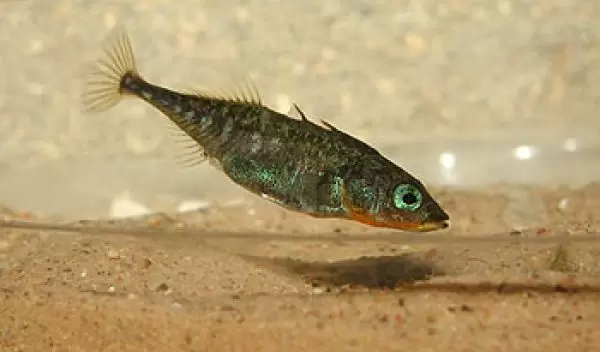
Stickleback Study Sheds Light on Species Formation
When Jeffrey McKinnon was a boy growing up in Vancouver, British Columbia, he netted and saved threespine stickleback fish that were stranded in drainage ditches near his home. That childhood fascination became a global scientific pursuit, which today is helping explain a fundamental mystery about how new species form.
The University of Wisconsin-Whitewater biologist and colleagues used more than a decade of field and laboratory research on sticklebacks to demonstrate a powerful link between ecology and species formation. The project is supported by the National Science Foundation.Collecting threespine sticklebacks from remote locations around the world--including Alaska, Canada, Iceland, Scotland, Norway and Japan--the research team studied mate selection among the genetically diverse but related populations. This study demonstrated that one key variable, body size, was the primary driving force in mating compatibility across independently evolving fish populations.
"Subtleties of behavior and molecular evolution appear to be relegated to the sidelines by this surprisingly simple result," McKinnon said.
This is an important finding in the ongoing question of how the spectacular diversity of species came about on Earth. This study provides further evidence of how ecology drives species formation, McKinnon said.
There are scores of stickleback populations, but they all emerged from a common marine ancestor. After glaciers receded, sticklebacks colonized widely divergent habitats in addition to the ocean, including freshwater lakes and rivers throughout the northern hemisphere. The differences in the populations, some significant, appear to be a direct result of adaptation to unique environments and in some cases led to mating barriers.
The size of these fish has evolved predictably by the type of environment, whether the environment in question is in Canada, Norway or Japan. The ocean fish, which often spawn in freshwater rivers like salmon, are generally larger than the stream populations.
Using laboratory mating tests, McKinnon's team found that mate selection by females was based consistently on body size--even when fish were paired with populations from the other side of the world. The pattern provided strong evidence that reproductive isolation--the definition of species formation--is brought about by adaptation to different environments.
In other words, fish from very similar environments, even when on an entirely different continent, were evolving in remarkably parallel fashion, he said.
McKinnon said the stickleback has been studied extensively since the 1940s, and has become an important "model system" for evolution studies. Dutch scientist Niko Tinbergen won a 1972 Nobel Prize in part for his study of the reproductive behavior of sticklebacks.
"It is becoming the lab rat of evolutionary ecology," McKinnon said. "Sticklebacks are great because they have colonized particular types of habitats time and again, rapidly adapting to local conditions and thus lending statistical power to comparative evolutionary studies."
-- Cheryl Dybas


